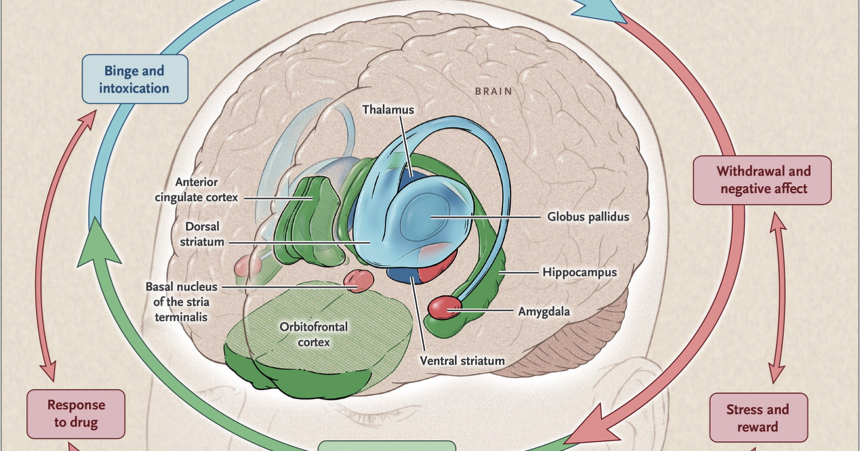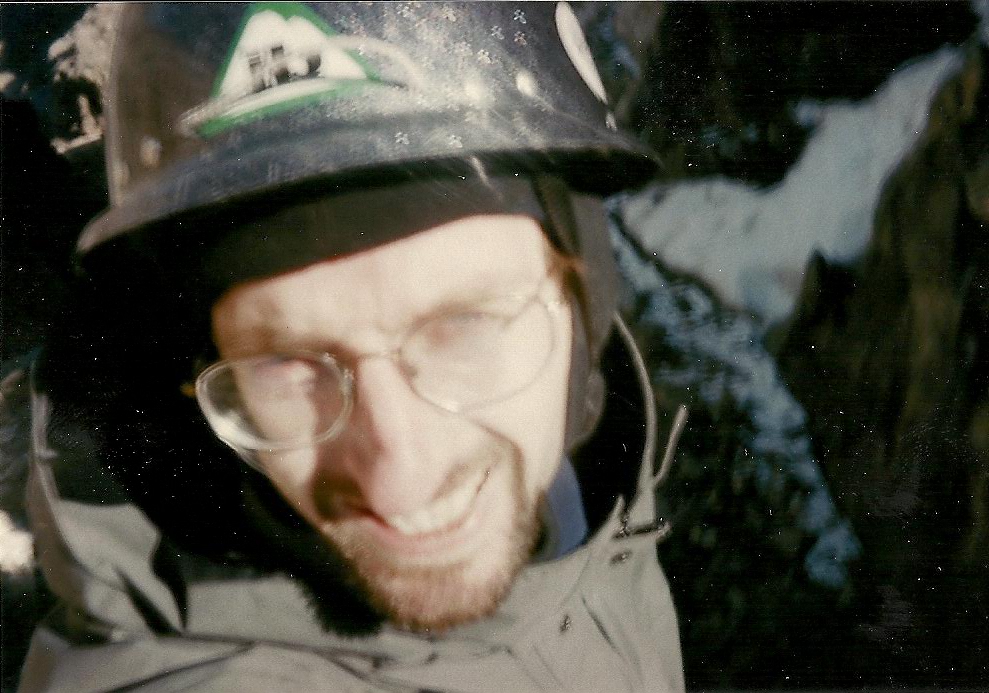I look at the small red spot on his arm and then at his eyes. My heart sinks. The red spot appears to be an irritated hair follicle. His gaze is steady and forthright. I am the 3rd doctor that he has been to for this problem. I recognize the diagnosis. I have seen many people over the years with his same complaints. I have treated many people with those complaints for lice, scabies, and other parasites, with great success. However, I have never successfully treated the condition from which this person suffers. Though they have symptoms which occur with a parasitic infestation the patient is actually afflicted by the belief that they are infested. They harbor a delusion.
A delusion is a fixed, false belief. In many cases this definition is not controversial. For instance, if someone believes that the CIA is controlling their thoughts and actions by means of a radio receiver implanted in their brain, we can quickly conclude that such a thing is demonstrably impossible. It doesn’t fit with what we know about structure of the brain. Such a receiver should be detectable by electronic means or by imaging. It is difficult to imagine how the device might have been surreptitiously inserted into the victim’s head. In other words, none of the stories that we could tell about the mind control device can be squared with any of our well-worn stories about the rest of the world. The glaring falsity makes the fixation easy to expose. When the delusional person suggests that the implantation was accomplished via a trans-sphenoidal incision which would leave no obvious scar, and that the receiver is made of material which nonmagnetic and radiolucent, and that the whole system operates on burst transmissions which are only detectable with cutting edge equipment which is currently only available to the CIA, it is pretty obvious that they are merely doing whatever it takes to preserve their belief rather than proposing a serious explanation.
The trouble is: the method we use to reject the mind control device story is not anything special. We compare experience – our own personal experience as well as our collective experience – with the contents of the mind control device proposition. If things match up, we believe the claim. If the pieces of a mind control device do not fit in to the puzzle of our world, we are prone to say that the claim is not true. The comparison process is not precise though. We often don’t have experience of every aspect of a claim. We also have questionable access to claims, especially when they relate to other people’s experiences.
We may tell people that we feel their pain, but we can never mean it literally. Herein lies a delusion’s opportunity. A dermatologist can tell you that they find no evidence of scabies mites, lice, or plastic filaments erupting from your skin. They cannot tell you that you are not itching in just the way and in just the places that people with scabies report itching. When confronted with such observations, the dermatologist must admit their ignorance., or face the same incredulity with which we greet the story about the mind control device. Furthermore, if the dermatologist is ignorant on that account and yet willing to forge ahead with a diagnosis, what are the limits of the doctor’s hubris? What other evidence has the smug twit disregarded?
The question used to be mostly rhetorical. It was part of that argument from incredulity. Now, the question has a ready answer: all that stuff on the Internet. There is a case report to support almost anything imaginable. Plus, there are instructions on how to investigate your own case. It is quite clear, once a person has it under the oil immersion lens on their home microscope, that the speck they picked off their forearm is not a skin flake, it is a bug. And by the way, patients cannot help but notice the lack of such equipment in the clinics which they visit in pursuit of the truth regarding their signs and symptoms.
Those who imagine that they have parasites, no longer need rely on the necessary limits of our knowledge as they contend with the medical establishment. The volume of unsorted information available to them dilutes any counterclaims. In the process, reams of reference material hide fixation. All the delusional person rejects are the hasty diagnoses of a few arrogant physicians. Those physicians are rejecting a body of literature which exceeds the memory capacity of the patient’s cell phone.
I have never successfully dispelled someone’s delusion of parasitosis, but I have come close, maybe even close enough. The patient had come to me with the usual complaints: rashes and bumps on her skin, itching, crawling sensations. She brought in the usual box of samples and sheets of lab tests. I had failed the 2 previous people who I diagnosed with this delusion. One of them simply never returned after I told him that we had done all the testing that we could and, though I could not tell him why he was having his symptoms, I could at least reassure him that the symptoms were not due to a parasitic infection. The other one walked out in the middle of their last visit after I told them that they ought to consider an antipsychotic for their symptoms.
Previous cases fell apart just about the time of diagnosis. This time, I resolved not to conclude no matter what. We looked at the samples. They were like Rorschach blots. Suggestive shapes faded in and out with focal adjustment if you were prepared to see them. All the labs were normal. There were no significant findings on previous skin biopsies and attempts at sampling from skin lesions were consistently negative. But her labs were consistently normal over time. She was feeling well. Her weight was stable. She did not have any allergy symptoms. Whatever might be crawling on her making her itch did not appear to be doing her any serious harm. Maybe this organism was more like all the mites and microbes peacefully inhabiting the backwaters of our anatomy, than it was like the bloodsucking arthropods that sometimes attack us. It was a successful detente for all of us
All that stood between us and level ground was the truth. It needed to be teased free of all the suppositions woven in with it, almost down to the facts. What remained when the sorting was done was a series of flat statements (I itch, there is a bump on my skin, I feel like something is crawling on me) without distorting references to a justifying theory. She no longer started with bugs under her skin as the primary description of her problem, however compelling the image.. She began with the itching and crawling sensations. The sensations meant what they meant without entailing the massive tangle of hypotheticals and contingencies that accompanied the bugs.
I was also forced to pick apart truth and supposition in my thoughts on her complaints.. Diagnosing her generated a fixation of my own, because it committed me to considering a single aspect of those complaints. To be honest, when I could find no insects, I immediately began to see her as deranged, and so I set about correcting her derangement without a 2nd thought. But my perseveration on the pathological nature of her delusion just fed its gravity.
We all suffer from delusions from time to time. Almost everyone is subject to a “mild positive delusion”. That entity is simply the fixed, false belief that one is more capable than they actually are in any given situation. At first glance, the mild positive delusion appears to be just a fancy name for foolishness. But it is hard to see how anyone would ever get better at anything without it. The delusion pulls a person into situations slightly beyond their control. That zone between comfortable mastery and havoc, is where learning occurs. Of course, not all delusions are so benign. Delusional beliefs may generate heavy, dark hypotheses which draw the deluded to grim actions.
The prime example of such a delusional black hole would be the shooting incident in a small pizza restaurant which occurred a couple years ago. The shooter disliked certain politicians. He took note of some stories on the Internet which tracked well with his estimation of those politicians character. He then began to actively search for such narratives. This drew him in to the point that he became absolutely convinced that the distasteful politicians were a cabal of child sex traffickers operating out of a small pizza restaurant on the East Coast. He subsequently packed his rifle in the car and drove to the pizza joint, where he demanded the release of the imprisoned children and immediate apprehension of the evil politicians. He fired a few shots in the air to emphasize the seriousness of his conviction.
For good or ill, we will never be free of delusions. We cannot do without them. Rather than undertaking the extermination of fixed, false beliefs, we might instead try to limit the pull of their gravity, as my one successful patient demonstrated. That means taking care not to mistake the theoretical structures which delusions generate for the truths undergirding the delusions. That way, when we find ourselves standing in the middle of a pizza restaurant with a rifle, we understand that we are standing in the middle of a pizza restaurant with a rifle. And we itch if and only if we itch. That much would be true.





 Close-up, the little gully evoked a strong sense of deja vu. The angle suggested that one might almost be able to stand up and walk it. The rock looked like a crocodile’s skin – all knobs and chunks with few cracks or pockets – and the few voids in the surface had formed from the erosion of yellow clay inclusions. I had been in this situation before, in the Canadian Rockies, the Tetons, the Cascades. It meant sparse and dubious protection for insecure climbing, with an ugly fall looming throughout.
Close-up, the little gully evoked a strong sense of deja vu. The angle suggested that one might almost be able to stand up and walk it. The rock looked like a crocodile’s skin – all knobs and chunks with few cracks or pockets – and the few voids in the surface had formed from the erosion of yellow clay inclusions. I had been in this situation before, in the Canadian Rockies, the Tetons, the Cascades. It meant sparse and dubious protection for insecure climbing, with an ugly fall looming throughout.





